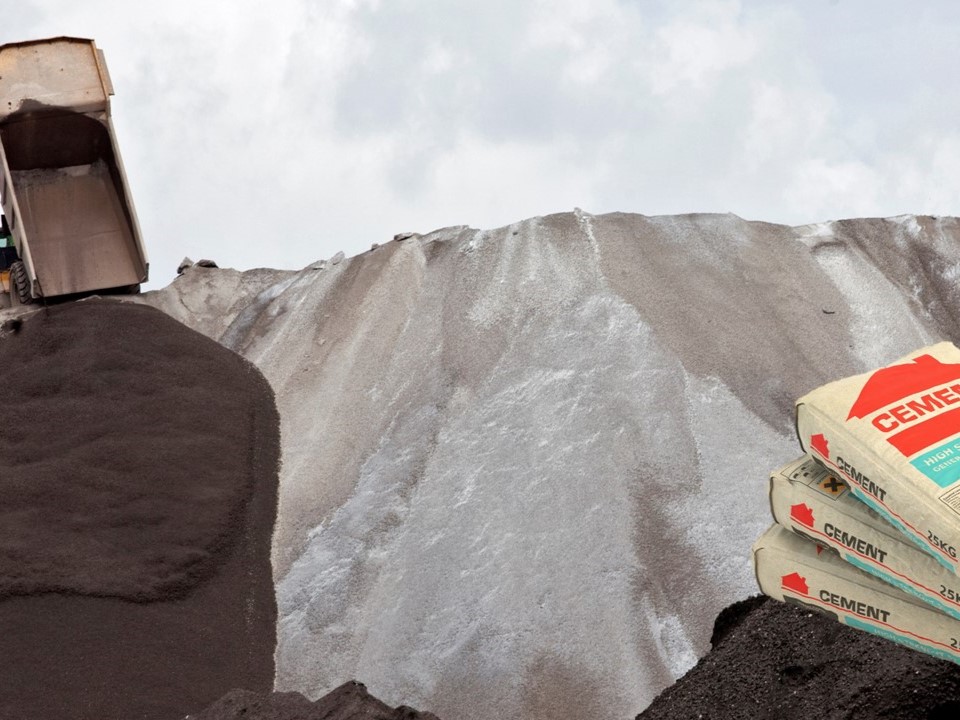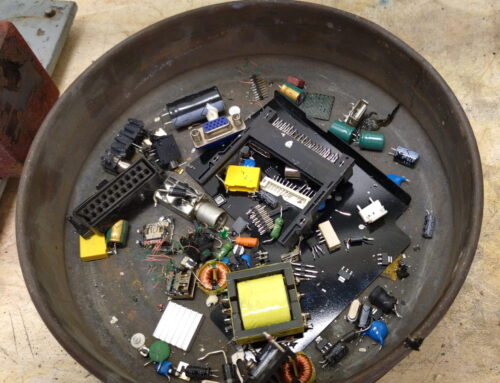Project Description
Key information
Project in the Spotlight: S81.6.15565
Market: Circularity/sustainability
Written M2i Program Manager: Viktoria Savran
Background
At present a wide range of industrial by-products are not used to their full potential and end up in low-grade applications or are landfilled. A typical example is steel slag (e.g. converter/BOF slag), a stone-like high-temperature by-product from steel making with high stored chemical energy. It is largely used as a substitute for sand and gravel in road base construction. In contrast, as the most expensive and important ingredient of concrete, cement consumes both natural raw materials and energy due to the high temperature production process and generates large amounts of CO2 greenhouse gas. Meanwhile the major challenges the construction industry faces is the reduction of its CO2 emissions. The obvious solution for this situation is to utilize industrial by-products in an efficient manner and, in this case, to find suitable methods for replacing cement to address both sustainability and energy conservation. This research project aimed at unlocking the potential of converter slag and to tackle the sustainability issue of cement. Two main directions were explored. Blending converter slag with cement as a supplementary cementitious material and activating the converter slag to function as an innovative stand-alone binder as an alternative for Portland cement.
In the quest for sustainability within the construction industry, this research project has set a new benchmark, spearheaded by the Eindhoven University of Technology (TU/e), in collaboration with a group of industrial companies from steel and construction sectors, Tata Steel Nederland, ENCI, Hess AAc, Van de Bosch Beton and Blue Phoenix Group. With the construction sector under increasing scrutiny for its environmental footprint, particularly the high CO2 emissions associated with its material utilization, this research showed a way to reduce the industry’s reliance on natural resources and to minimize waste.
Research Objectives and Highlights
The primary goal of this research project was to study the potential of converter slag as a supplementary cementitious material (SCM), to develop it as a stand-alone binder by chemical activation, and to explore its use in autoclaved concrete. This venture promised not only to mitigate the environmental impact associated with conventional cement but also to pave the way for innovative building solutions. Key highlights from the project include:
Hydration Behavior and Heavy Metal Immobilization: Key was understanding the hydration behavior of converter steel slag – finding the reaction equations that describe the transformation of the high-temperature slag minerals into their hydration products. Significant insights were obtained into early and later age slag reactivity and the immobilization of heavy metals.
Hydration of dominant slag phase: Almost 50% of the slag consists of Dicalcium silicate, which is difficult to activate but essential for the formation of hydration phase that gives the slag strength as a binder. Fundamental insights were obtained into the hydration behavior of synthesized dicalcium silicate , and the role of anions (carbonate, sulphate and hydroxide) on its hydration rate.
Slag as Supplementary Cementitious Material: Utilizing converter slag blended with Portland cement, optimal strength was obtained for 5 – 25% replacement, showcasing potential for producing slag-containing building products, a clear option to lower manufacturing costs and diminish landfill waste. It was noticed that slag addition lowered early, 1 day, strength, but gave higher 28 day values. Blends including Blast Furnace slag in addition to converter slag showed poor performance.
Enhanced Reactivity through mechanochemical activation: Milling of slags with chemical additives was employed to enhance the reactivity of converter slag. The binder performance of cement-fine slag powder could be improved further using Potassium Citrate, which minimized water demand while improving flowability, by acting as a superplasticizer. The Potassium Citrate also activated the hydration of the C2F (Ca2(Al,Fe)2O5) phase in the slag enabling it to function as a 100% slag-based binder.
Autoclaved converter slag: A combination of Potassium Citrate activation followed by autoclave treatment with steam pressure of 11 bar at 187C gave an appreciable strength for a 100% slag-based concrete (mortar) product.
The project successfully demonstrated the feasibility of using converter slag in the creation of eco-efficient, high-end construction materials. Two patents resulted from spin-off projects. Through extensive research it was established that converter slag could serve as an effective SCM, or as stand-alone binder contributing to both the reduction of CO2 emissions and reliance on virgin raw materials. The findings also highlighted the potential for converter slag to improve the environmental sustainability of building materials, offering a dual benefit of waste reduction and enhanced material performance.
Future Directions
The results are in and they’re pretty exciting. Turns out, converter slag can actually do the job, helping to make building materials that are less harsh on our planet. It’s a win-win: less waste from steelmaking going into landfills and less CO2 puffing into the air when we make new buildings. This is just the beginning. The team thinks about how to make even better use of converter slag, like tweaking its chemistry and figuring out new mixes for concrete that could include other recycled materials. The future is looking bright for building greener and cleaner. Building on the achievements of this project, future research is poised to delve deeper into the application potential of converter slag. Key areas of interest include:
Further Exploration of slag Reactivity: A currently running spin-off project concerns the complex interplay between the slag minerals, their hydration products and immobilization of potentially toxic elements like Cr and V. Heavy metal immobilization, secured for second cycle use, will be crucial for the use of converter slag in construction materials.
Kinetic Dissolution Modeling: Converter-slags can show inhibition of early-age hydration when blended with Portland-cement, and in stand-alone hydration. Strength development seems slag-batch dependent. For reliable slag utilization, it is essential to unravel the pore-fluid evolution during the early slag hydration stages. Next, physico-chemical models can be developed for dissolution rates and supersaturation/precipitation to predict the chemical effect of slag on Portland cement to explain its retardation effect on hardening.
Broadening the Scope: With the green-transition in steelmaking, use of coal and Blast Furnaces will be phased out and GBFS (Granulated Blast Furnace Slag) will disappear. The impurities in ores will still give rise to slag formation in the processes. The change in steel production will not affect the steel quality, but will most certainly lead to significantly different slag by-products with consequences for the cement industry. Currently Blast Furnace slag from carbothermic iron-production is a major substitute (SCM) in cements. The future electrical smelting furnaces using iron ore pre reduced with H2 will yield a potentially viable substitute slag. The slag composition in the new processes can still be optimized to meet SCM requirements for cement. Steel and cement industry will work together to develop the best slag. Not only cementitious properties but also environmental exposure to heavy metals from slags will need to be resolved.
Conclusion
The collaborative effort to repurpose steel by-products into sustainable construction materials represents a significant milestone in the journey towards a more sustainable future. This initiative not only addresses specific environmental challenges faced by the steel and construction industries but also serves as a model for cross-sectoral collaboration aimed at achieving broader sustainability objectives. As both industries continue to advance, the lessons learned and technologies developed through this project will undoubtedly contribute to their evolving sustainability goals.
The project got NWO-TTW funding in 2016-2023 under project number 14652 (M2i project number S81.6.15565). The core of the project was carried out by PhD researchers Muhammad Jawad Ahmed, Jonathan Zepper, Winnie Franco and PostDoctoral researcher / UD dr. Katrin Schollbach, under the supervision of dr. Qingliang Yu., prof. Jos Brouwers at TU/e (Chair Building Materials) and prof. Sieger van der Laan from Tata Steel Nederland. The project sparked much interest with other students in Building Materials, notable contributions in spin-off projects were made by: Gang Liu, Anna Kaja, Fan Wu, Tao Liu, Sacha de Bruin, Jan-Joost Botterweg, Stefan Chaves Figueiredo, Kim Lambrechts , Xuan Ling. A total of 17 converter slag related papers have been published so far.
 Sieger van der Laan (Tata Steel)
Sieger van der Laan (Tata Steel)
Recognizing the dual benefits of waste reduction and resource optimization, Tata Steel views this collaboration as a strategic step towards sustainable industry practices, echoing a broader commitment to environmental responsibility and innovation.
We’re all in. The results of this project could really change the game for how we deal with waste and make our industry greener.
Jos Brouwers (TU/e)

From an academic standpoint, TU/e sees this project as a testament to the transformative power of interdisciplinary research. By bridging the gap between industrial needs and environmental goals, the initiative highlights the role of academic-industry collaborations in addressing global sustainability challenges.
We see this project as a significant step forward in sustainable construction research. The collaboration between academia and industry has not only provided practical solutions to pressing environmental challenges but also opened avenues for further scientific inquiry and application
Many people regard concrete as boring and take it for granted. However, it is a complex building material that forms foundation of our modern built environment. Unfortunately, it also has an enormous negative impact on the environment due to the large quantities we use.
Reusing steel slags in concrete would make it possible to achieve a significant reduction in CO2 emissions of the concrete industry while avoiding large amounts of waste in the steel industry. Therefore this research project is an impactful way we as scientists can contribute to climate neutrality in close collaboration with the industry.




